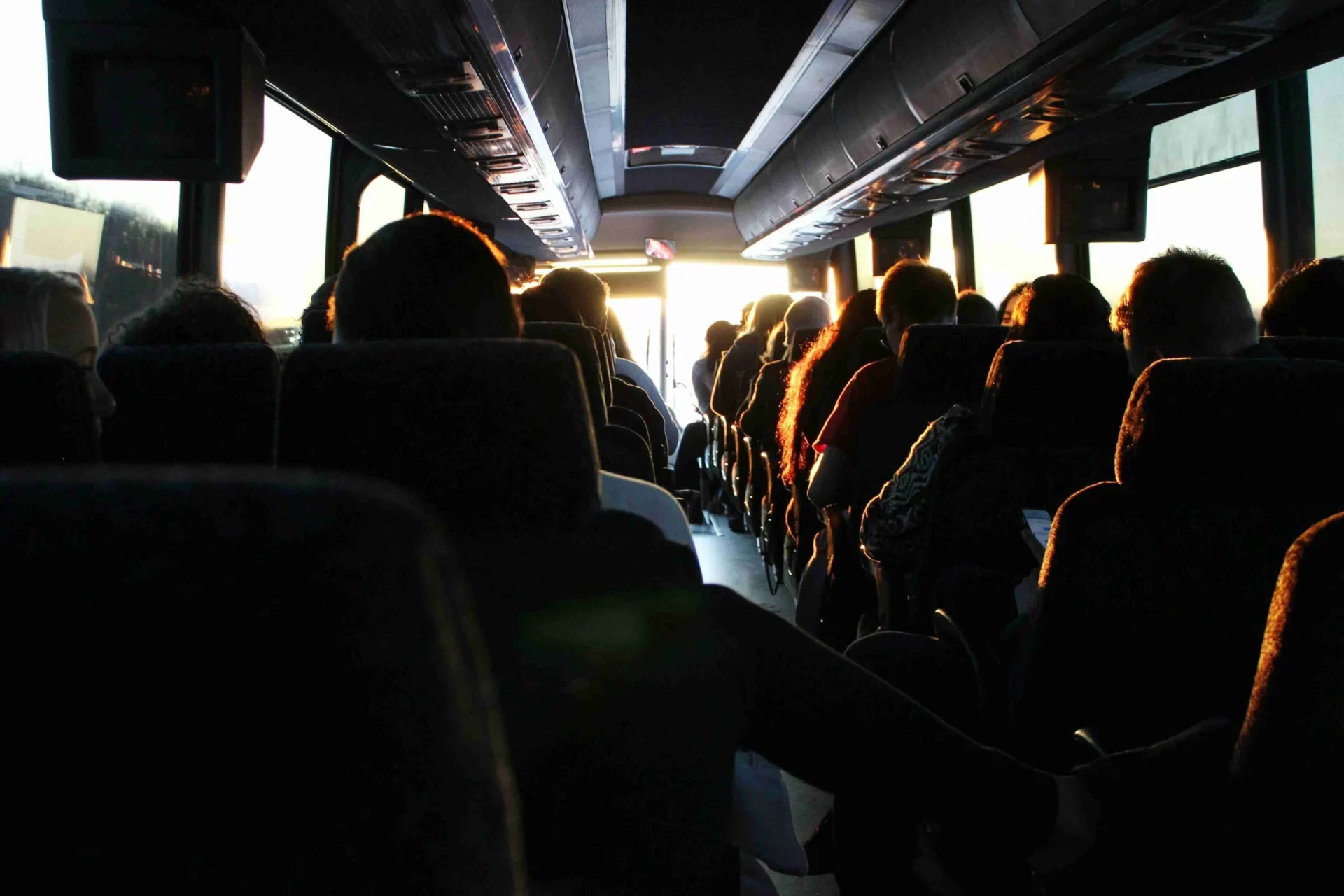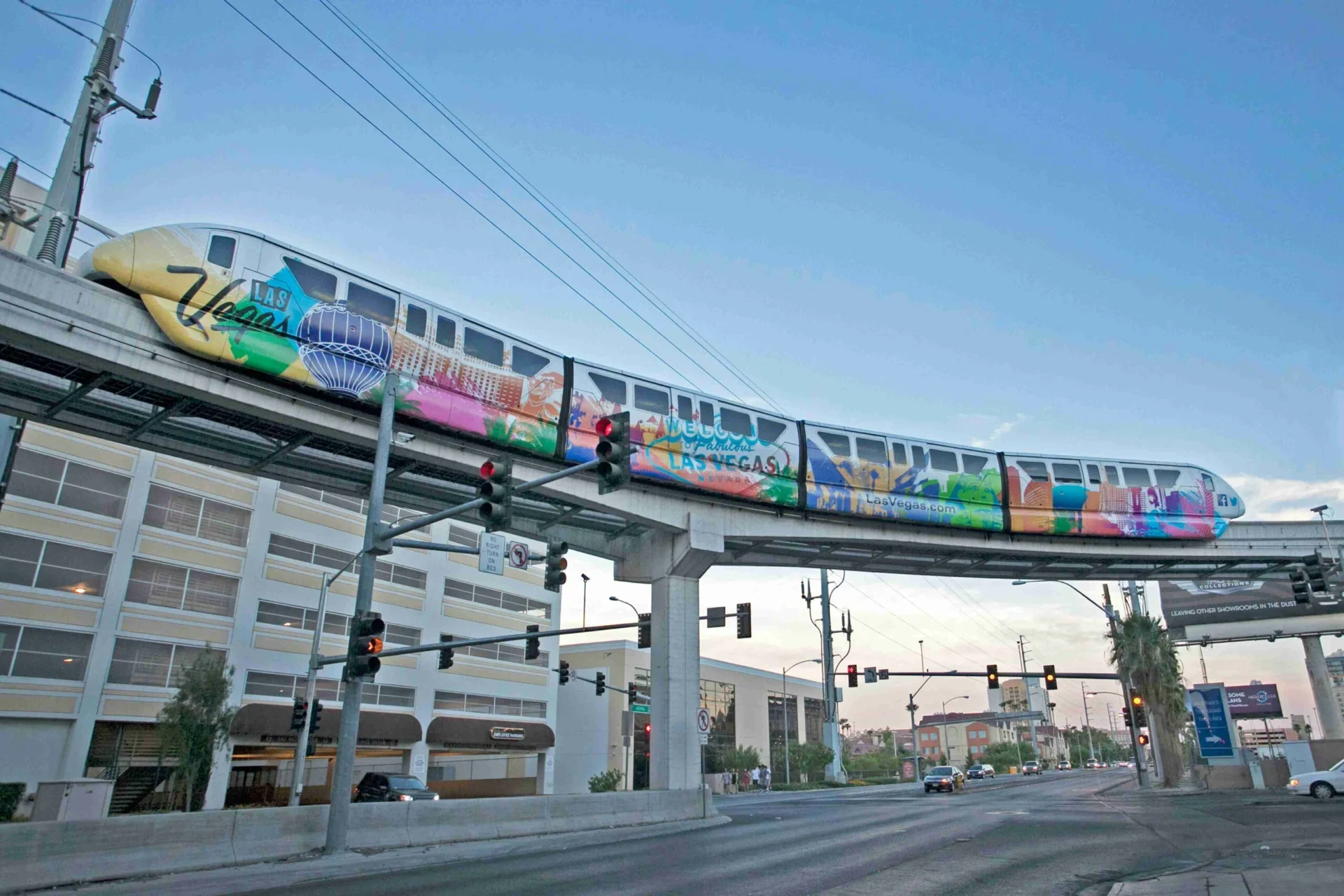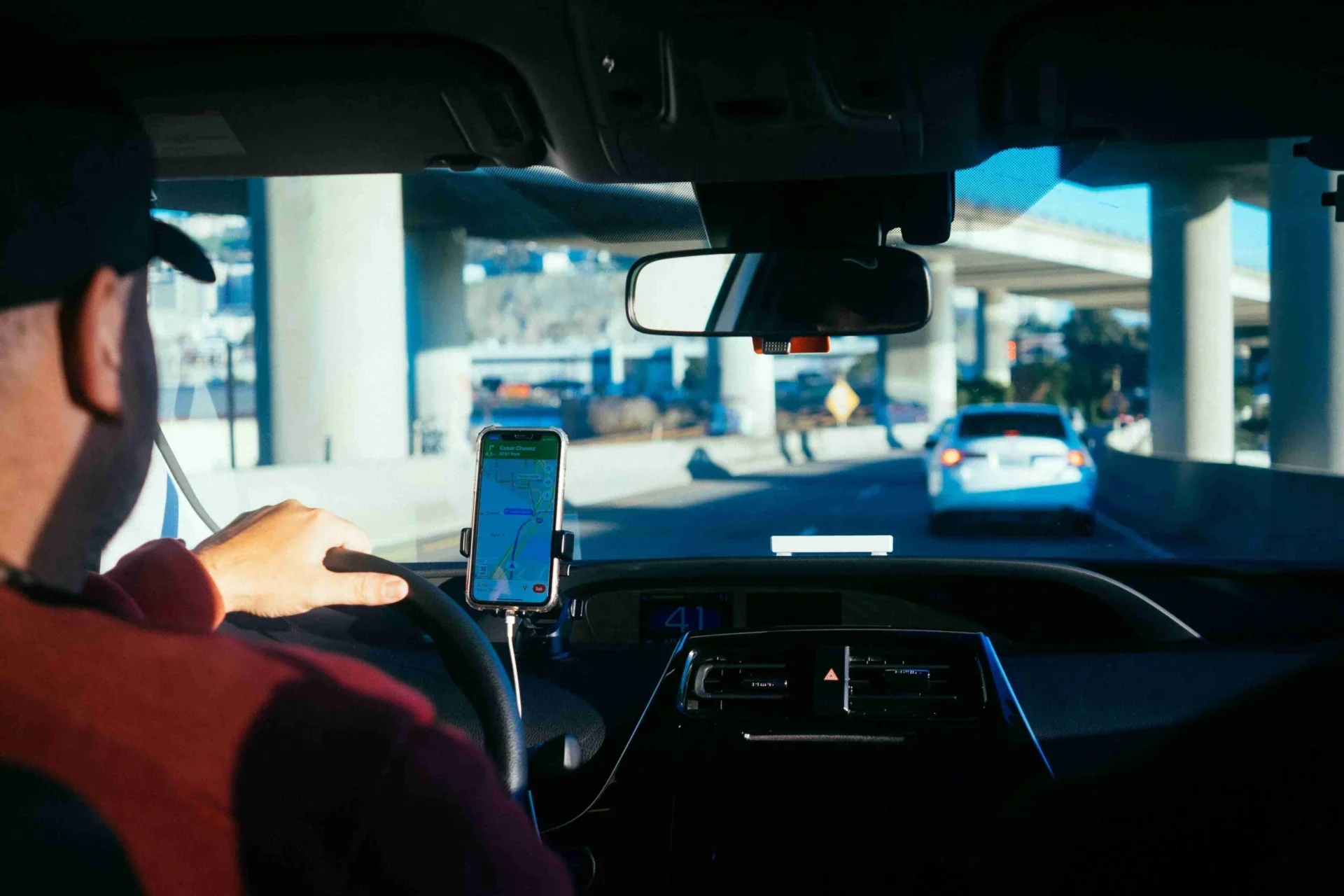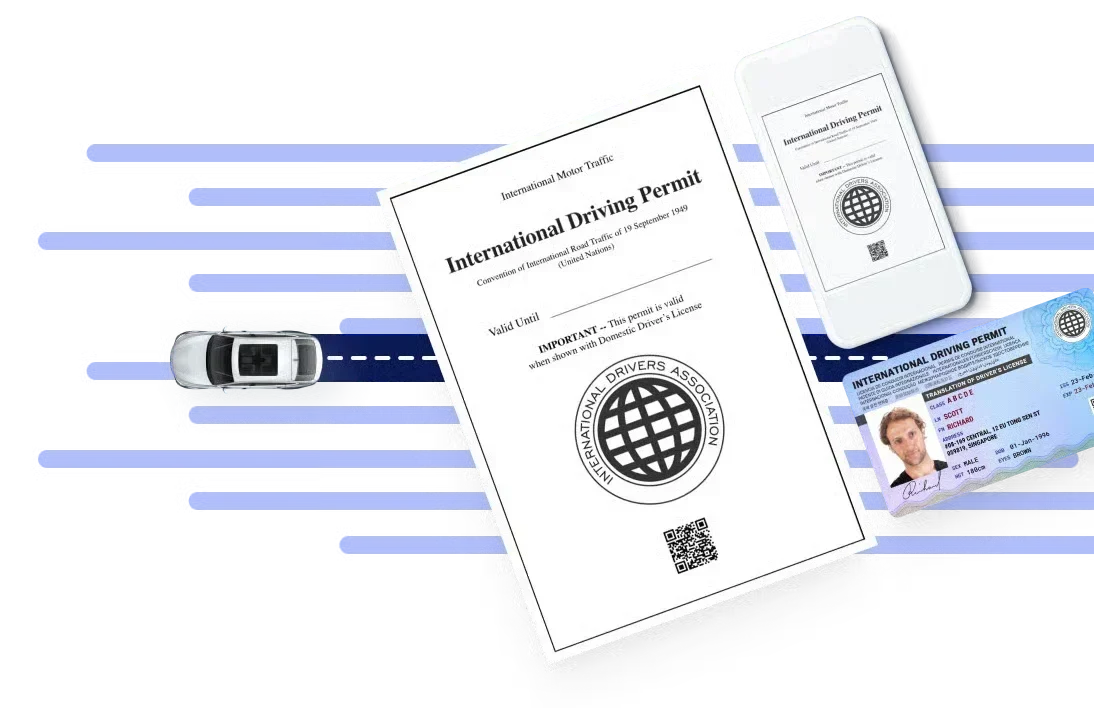Exploring Nevada offers diverse experiences, from the vibrant streets of Las Vegas to the scenic beauty of regional areas. Utilizing public transportation in Nevada is a great way to see the state efficiently and affordably. With well-connected transit routes and bus services, especially in Las Vegas and other key areas, commuting allows travelers to navigate the region seamlessly.
Check if you need an IDP Now
Where was your license issued?
Destination
Whether hopping on a bus or taking advantage of regional transit options, public transportation provides a convenient way to explore Nevada’s attractions and hidden gems.
Buses
The best way to get around Nevada is by bus. Public bus services provide convenient transportation options across various cities and regions. Here are some of the key public bus services in the state:
RTC (Regional Transportation Commission) of Southern Nevada
Coverage
- Primary Area: The Regional Transportation Commission primarily services the Las Vegas metropolitan area.
- Extended Areas: Includes Henderson, North Las Vegas, Summerlin, and parts of unincorporated Clark County.
Services
- Local Bus Routes: Extensive network serving neighborhoods, shopping centers, and local destinations.
- Express Services: Faster routes connecting major hubs and transit centers.
- 24-Hour Service: Many routes operate around the clock, providing reliable transportation at all hours.
- Accessibility: Buses are equipped to accommodate passengers with disabilities, featuring low-floor designs and wheelchair ramps.
Notable Routes
- The Deuce: A popular double-decker bus route running 24/7 along the Las Vegas Strip and downtown Las Vegas, connecting major casinos, attractions, and landmarks.
- SDX (Strip and Downtown Express): An express service that quickly transports passengers between the Strip and downtown Las Vegas with limited stops.
- BRT (Bus Rapid Transit ): High-frequency, limited-stop service on key routes, including the “Green Line” and “Blue Line”, which offer efficient travel across the city.
- Route 108 (Maryland Pkwy): A major north-south route serving the University of Nevada, Las Vegas (UNLV) area and connecting to the Las Vegas Strip and downtown.
Fare Info and Payment Methods
The RTC (Regional Transportation Commission) of Southern Nevada offers a range of fare options and convenient payment methods to streamline travel in Las Vegas and its surrounding areas. From affordable single ride tickets to unlimited monthly passes, riders can access various services using RTC Smart Cards , mobile apps, and ticket vending machines.
Fare Information:
- Single Ride: $2.00 for a one-way trip.
- 24-Hour Pass: $6.00, allowing unlimited rides within a 24-hour period.
- 7-Day Pass: $20.00, offering unlimited rides for seven consecutive days.
- Monthly Pass: $65.00, providing unlimited rides for one month.
Special Fares: Reduced fares are available for seniors, disabled persons, and youth (ages 6-17).
Payment Methods:
1. RTC Smart Card: Rechargeable card that can be used to pay fares, available at RTC transit centers and online.
2. Mobile App: The RTC app allows for the purchase of single rides, passes, and provides real-time bus tracking.
3. Ticket Vending Machines: Located at major transit centers and selected bus stops, these machines accept cash, credit, and debit cards.
4. Contactless Payment: Some buses accept contactless payment methods such as mobile wallets and contactless credit/debit cards.
5. Cash: Exact fare is required when paying with cash on the bus; drivers do not provide change.


Source: Photo by Ash Gerlach on Unsplash
RTC Washoe (Regional Transportation Commission of Washoe County)
RTC Washoe (Regional Transportation Commission of Washoe County ) is a key player in public transit for the Reno-Sparks metropolitan area. It offers a range of services including:
- Local Bus Services: These cover various neighborhoods and key locations within Reno and Sparks, including major stops like downtown Reno, the Reno-Sparks Convention Center, and the University of Nevada, Reno.
- Regional Bus Services: These routes extend beyond the immediate metropolitan area, connecting residents with nearby towns and communities, making it easier to travel across Washoe County.
Notable Routes
- RT (Reno Transit) Routes: Covers critical parts of the region including shopping centers, residential areas, and business districts.
- RTC Access: Provides specialized transportation for individuals with disabilities, offering paratransit services with door-to-door or curb-to-curb options.
Additional Services: RTC Washoe also offers the FlexRIDE service, a demand-responsive transit option for areas with lower ridership, allowing users to schedule rides in advance.
Fares: Typically includes options for single rides, day passes, and monthly passes, with discounts available for seniors, disabled individuals, and youth.
Payment Methods: Tickets can be purchased via ticket vending machines, online, or through the RTC Washoe mobile app. The transit system supports contactless payment options for convenience.
For more details, schedules, and route maps, you can visit the RTC Washoe website or contact their customer service.
Bus Services in Other Cities
Carson City, Lyon County, and Elko County offer local and regional bus services to help residents and tourists get around Nevada. Carson City’s transit covers local routes with connections to nearby areas, while Lyon County Transit provides both local and commuter services, linking communities and Carson City. Elko County Transit focuses on local transit options for the Elko area and surrounding regions, ensuring accessibility throughout the state.


Source: Photo by Jeffry Surianto
Train Travel
Traveling by train is a great way to explore Nevada’s scenic landscapes in comfort, with stunning views of deserts and mountains. It’s stress-free, traffic-free, and ideal for reaching remote locations like Elko and Winnemucca. Here’s some information about which train to take when you’re touring Nevada:
Amtrak California Zephyr
- Route: The California Zephyr runs from Chicago to San Francisco, traversing the heart of the U.S. and crossing seven states. It’s considered one of Amtrak’s most scenic routes.
- Key Nevada Stops: The primary stops in Nevada are in Elko and Winnemucca, providing access to Amtrak services for passengers traveling within and through the state.
- Scenic Views: Rocky Mountains, the expansive Colorado River, and the majestic Sierra Nevada range.
- Comforts & Amenities: The Zephyr includes sleeper cars, dining services, and observation cars designed to maximize the viewing experience.
Light Rail and Streetcars
The Las Vegas Monorail
The Las Vegas Monorail is a quick and efficient way to travel along the Las Vegas Strip, connecting major resorts, hotels, and entertainment venues.
Route: The 3.9-mile route has seven stops, including popular destinations like the Las Vegas Convention Center, MGM Grand, Flamingo, and Caesars Palace.
Schedule/Frequency: Trains run every 4-8 minutes, making it a convenient option to avoid traffic on the Strip. Operating from early morning to late at night, the monorail offers both single-ride tickets and multi-day passes for travelers. The tracks are elevated, providing you with great views of the city.
Cost and Payment Methods
- Single Ride Ticket: $5 per ride.
- Unlimited Day Passes: Starts at $13 and increases depending on the number of days you’ll be purchasing.
Payment Methods:
- Ticket Vending Machines: Located at each monorail station.
- Online Purchase: Tickets can be bought via the Las Vegas Monorail website.
- Mobile App: Offers ticket purchases and real-time updates.
- Contactless Payment: Credit/debit cards and mobile payment options like Apple Pay and Google Pay are accepted.
Ride Sharing
Uber and Lyft are the ride sharing services that operate extensively in major cities like Las Vegas and Reno, offering quick and convenient transportation.
- Pricing: Uber and Lyft fares vary based on distance, time of day, and demand. Surge pricing may apply during peak hours or special events.
- Payment Methods: All payments are made through the app, with options to link credit cards, debit cards, and mobile wallets (Apple Pay, Google Pay).
- Safety Features: Both Uber and Lyft offer in-app safety features, such as live tracking, driver ratings, and emergency assistance.
Bicycle Rentals and Bike-Sharing Programs
Bike sharing in Nevada is a great way to explore cities like Las Vegas and Reno, offering a flexible and eco-friendly transportation option for short trips.
- Las Vegas: Bike Share Las Vegas provides bikes at various stations throughout downtown, the Las Vegas Strip, and surrounding neighborhoods.
- Cost: Typically, bike rentals start at around $3 for a single ride (up to 30 minutes), with additional charges for longer use. Day passes or monthly memberships are also available.
- Payment: Bikes can be rented using a credit/debit card via the Bike Share Las Vegas app or at kiosk stations located throughout downtown and the Las Vegas Strip.
- Reno: Features the Reno Bike Project, which offers bike rentals and bike-sharing options for residents and visitors. Bikes are available at key locations and are suited for short rides.
- Cost: Rates generally start at $1 per half hour, with options for daily and monthly passes.
- Payment: The Reno Bike Project’s bike rentals can be paid for using credit/debit cards at designated rental stations or through their mobile app.
Source: Photo by Samuele Errico Piccarini on Unsplash
Car Rental
Car rental in Nevada provides the freedom to explore the state’s diverse landscapes at your own pace. Major cities like Las Vegas, Reno, and Carson City offer a range of rental options, from economy to luxury vehicles.
Rental agencies typically have convenient locations at airports and city centers, with options for daily, weekly, or monthly rates.
To rent a car in Nevada, you need:
- Driver’s License: A valid license is required. International drivers also need a passport and sometimes a foreign driving permit or an International Driving Permit (IDP).
- Age: Typically, you must be at least 21. Drivers under 25 may face extra fees.
- Credit Card: A major credit card in your name is needed for deposits and payment.
- Insurance: Proof of insurance is required when driving in Nevada. Rental companies offer insurance or you can use your own.
- Booking: It’s best to book in advance, especially during busy periods.
Source: Photo by Paul Hanaoka on Unsplash
Insider Tips for Commuting Around Nevada
Here are some insider tips for using public transportation in Nevada:
- Plan Ahead: Check schedules and routes in advance. Apps and websites can help with real-time updates.
- Buy in Bulk: Purchase multi-ride passes or day passes for savings, especially if you plan to travel frequently.
- Know the Routes: Familiarize yourself with key routes like RTC buses in Las Vegas or RTC Washoe in Reno for efficient travel.
- Use Transit Apps: Download apps for bus schedules, fare payment, and real-time tracking.
- Be on Time: Arrive a few minutes early to avoid missing your ride. Buses and trains can run on tight schedules.
- Stay Safe: Keep personal belongings secure and be aware of your surroundings, especially when traveling late.
- Ask for Help: Don’t hesitate to ask transit staff or fellow passengers if you need assistance or directions.
FAQs
How can I find public transit routes and schedules?
Transit routes and schedules can be found on official websites like RTC’s website for Las Vegas and Washoe County or through transit apps available for download.
What should I do if I miss my bus or train?
Check the next available route using transit apps or station information. Buses and trains often have frequent services, especially in urban areas.
Are there any discounts available for public transit?
Yes, many transit systems offer discounts for seniors, students, and people with disabilities. Check the specific transit provider’s website for details.
Can I use my bike on public transit?
Many transit systems, including RTC buses, have bike racks. However, it’s always best to check the specific rules and availability in advance.
How do I pay for public transit?
Payments can be made using cash, credit/debit cards, or transit-specific cards. Check the payment methods accepted by your transit provider.
Is public transit accessible for people with disabilities?
Most transit systems are equipped with accessible features, such as low-floor buses and elevators. Check with the transit provider for specific accessibility options and services.
Where can I purchase transit passes?
Passes can be bought at transit centers, online, or through mobile apps. Look for information on the transit provider’s website.
Are there any safety tips for using public transit?
Stay alert, keep your belongings secure, and avoid traveling alone late at night if possible. Familiarize yourself with safety protocols and emergency procedures.






